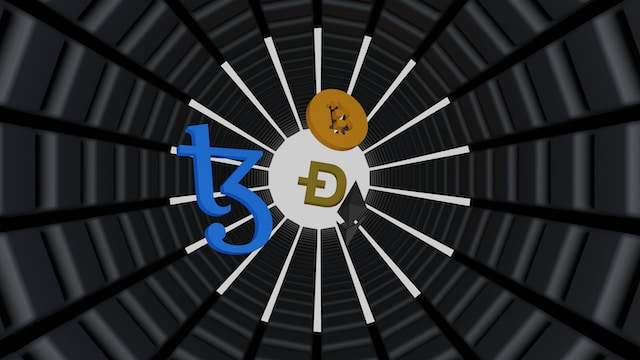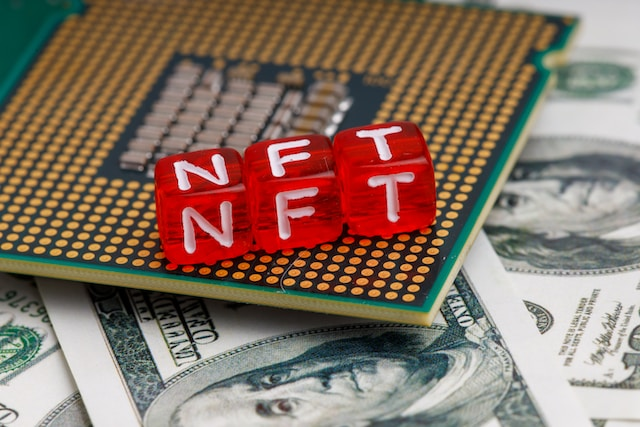share
If you’re fairly familiar with the crypto world, you probably have heard of “Web2” and “Web3”. You may initially be a bit confused about their meanings.
Well, basically, Web2 is our current internet reality that upgraded from the old web1 of the early 2000s. It’s the internet that we’ve known for the past twenty years. Web3 is the third version that will change how we interact with the internet.
So, you may wonder, what are these changes? And how do they relate to your journey in crypto? We’re going to answer both questions in this article. But, first, let’s see what Web2 and Web3 exactly mean.

What is Web2?
Since Tim O’Reilly and Dale Dougherty’s 2004 summit, we’ve known the current internet as Web2 which drastically changed the experience of an average user.
The internet that we currently use, known as Web2, offers users a chance to interact, learn, teach, and produce content. Web2 altered the uninteresting pages of Web1 by becoming an upgraded form of it that includes blogs, social media, and interactive sources of information.
Innovations like social media, smartphones, and wireless connectivity all contributed to the explosive expansion of Web2. Platforms like Instagram and Twitter, which increased social activity and provided other benefits, were made possible by Web2 advancements. The planet has evolved into an online village thanks to Web2.
Web2 allowed many users to earn money through various full- or part-time gigs, and it showed us a unique view of the world. Anybody may now rent an apartment, offer their skills on the web, and earn an income without ever leaving their home.
What is Web3?
As the name suggests, Web3 is the third iteration of the internet that places a strong emphasis on decentralizing operations and getting rid of any middlemen who would want to impose total control over everything.
Web3 also leverages blockchain technology to solve Web2’s security problems. Decentralized Web3, however, also focuses on better interaction through AI systems, which goes beyond security.
While it’s premature to call Web2 finished, there’s no doubt that Web3 will transform many conventional operations in the future.
While Web3 is not without its challenges, the lack of oversight would make it hard to tackle harmful events like online fraud, racial prejudice, and misinformation, which are already not so easy to handle.
The legal system is another point of confusion as it is unclear which country’s legal system will be engaged in conflicts. Also, Web3 trades and payments still have limited scalability, which substantially delays processing.

Web2 vs Web3
Web3 is our picture of a futuristic internet while Web2 is the reality we deal with today. Web3 is not really here yet, so we have no idea how it will look in its final form. But by looking at many crypto initiatives, we can draw an image of Web3 and the elements it may have. All of these businesses started with Web2 and the arrival of Web3 may change their game in many aspects.
Some of those changes are:
Asset & Content Ownership
In Web2, servers were in charge of data storage, which led to unique access issues and concerns about user security and privacy. The desires of Internet corporations are undoubtedly not served by Web3, because data can be decentralized and kept simultaneously in several locations.
One significant distinction between Web2 and Web3 is how Web3 will address the limitations of Web2 by enabling people to make money from their online activities. Currently, people on social media don’t have any exclusive rights to their content on these platforms.
However, a social media network based on Web3 will enable users to make money by sharing their unique content and turning them into non-fungible tokens (NFTs).
Another example is online games. For instance, in Web2, anytime you want to get an in-game item, you have to pay with actual cash. That’s not good because your in-game assets will vanish if you lose the account or accidentally delete the game.
You will not experience any of those problems if you use Web3 because you’ll have total ownership over your assets through NFTs. Because of this, nobody—not even the game designers—has the right to take control of your items.
Some crypto gaming platforms also allow you to earn money from selling your NFTs on open-source markets. This is not possible in Web2 games as in-game assets are only useful in the game.

Privacy
Data security is another problem in Web2, as major IT corporations have complete control over user data collected through sign-ups, questionnaires, etc. By putting a stop to endless signups and introducing technologies like the Domain Naming service, which will link ids to a digital wallet, Web3 will give people control over their data.
Before you get access to Web2 services, you must provide some form of personal information. This inevitably results in a loss of privacy. You are not required to provide your personal information in Web3. But, you are helpless if someone hacks your wallet or a decentralized application. It’s because no single entity is in charge of a DAO-based program that is genuinely decentralized.
Governance
Web3 platforms are inherently decentralized. Unlike Web2 systems, where governance is only in the hands of a few, the community of Web3 members oversee the governance process.
On a centralized Web2 structure, financial bodies control the entire process. For instance, a bank has specific working hours that determine when you can get things done. They can also decide to freeze your money in case of suspicious activity.
It’s possible to avoid that on a Web3 network. With a non-custodial wallet, users can trade with anyone at any time without worrying about the influence of a middleman. Another example is community-based exchanges where users can’t express their concerns regarding the overall operations and vote on proposals to change the structure.
Censorship
The centralized businesses that control the goods and services in Web2 must follow local regulations. As a result, their terms and conditions have severe censoring guidelines. Censorship does not apply in Web3 because it has a decentralized nature.
Every successful blockchain project or token needs censorship resistance. It has always been a cornerstone of the cryptocurrency industry and was one of the primary drivers of the movement’s emergence. It says that no individual or entity can control, limit, or block your cryptocurrency transactions if you meet the technical conditions of a legitimate transaction.

Interoperability
With a lack of service standards, Web2 services sometimes require complex integration procedures, but Web3 provides greater interoperability via platforms like Ethereum that allow you to create multi-device applications.
Web3 allows developers to share resources and communicate with other parties on the blockchain, something that’s not easy in the current blockchain structure. Web3 allows users to easily send money from one chain to another without the usual security challenges of Web2.
Today, many crypto platforms use cross-chain swaps to issue a token in one blockchain and transfer it to another. It allows people to pay for goods and services in a token without relying on a third-party exchange.
Technologies
Web2 had to advance significantly from the first iteration to address new obstacles. One of the main problems was to encourage information sharing rather than merely its consumption. The most well-known technologies of the Web2 era are HTML5, JavaScript, and CSS3.
Then, the arrival of AI had a gigantic influence on the internet, which was meant to be both a trustworthy “source” of data and a driver of material quality. ML, decentralization, neural networks, and semantic web are among the biggest technologies behind Web3.
One of the more prominent Web3 phenomena is the peer-to-peer network (P2P). P2P networks allow users to communicate, conduct business, and share data secretly and independently. With Web2, copies of your data are transferred to servers, meaning that you’re not the only one with ownership over your personal data.
P2P systems are meant to instantly trade crypto without heavily relying on middlemen. In other words, the buyer sends money straight to the seller’s wallet. Exchanging one asset with another does not involve extra accounts. To automate the process of moving digital currencies from one wallet to another, a special P2P platform can allow both parties to exchange coins without a third party.
Therefore, they don’t need to wait minutes or hours for someone to verify the exchange.
Custody
In the traditional Web2 world, a financial institution like a bank has centralized authority over your money. In other words, they have custody of your assets and can choose to freeze them in certain cases.
There are even some centralized crypto trading platforms like Coinbase that use a custodial mechanism to secure digital assets and monitor their movements. Of course, there are obvious benefits to having centralized authority because it can prevent fraud, money laundering, corruption, and many other illegal activities.
Another benefit of platforms like Coinbase is convenience because it helps you buy or sell different assets, trade them with other coins, and make payments without the hassles of a private key.
But, there are backlashes to that because as said before, many play-to-earn games, fashion sites, fan-based platforms, and NFT social networks can only work when you completely control the data, not via a custodian.
Web3 can make this possible through a non-custodial wallet that does not give anyone but you access to the wallet and helps you decide on the volume and trade type. This is becoming more and more popular in the crypto industry because users can keep their assets from freezing, especially at a time when crypto regulations are constantly changing.

Transparency
Decentralization is the main difference in the Web2 vs Web3 discussion. This can promote democracy, transparency, and user control. The goal of the internet was to cut out the intermediaries and connect users. Yet new intermediaries have only taken the place of the old ones.
But, Web3 can finally fulfill the promise by giving people voting rights and recording every single transaction in an immutable, distributed ledger. Such transparency and democracy can only encourage more people to use crypto in different aspects of their daily lives, not just trading.
Digital Identity
The prime example of a digital identity can be found in open-world gaming. For so long, such games have been a place for self-expression and social interaction for people. However, due to Web2’s lack of interoperability, players’ experiences in such “open” worlds were actually limited.
They would spend days and months customizing their in-game character, building their skill sets, earning money, and gaining some credit in the community, but all of that would disappear as soon as they left to play another game. In other words, they did not have a persistent digital identity.
Thanks to Web3, there are many crypto metaverse platforms today that address such issues. They allow your digital identity to live in a virtual world, interact with other avatars, and participate in different projects and games without ever losing their resources and abilities.
Bottom Line
Web3 promises a secure, transparent future where you can buy cars, houses, and anything in a virtual world. Many believe it will be the solution for all the Web2 challenges we’ve faced in terms of security, transparency, censorship, and governance.
Of course, our current Web2 isn’t going anywhere and we shouldn’t expect people to instantly leave their familiar centralized internet and live with a fully decentralized internet in one move. But, in any case, Web3 is here to stay and it can open up many opportunities for you to make money and contribute to society.
You just have to get on early and educate yourself in this area to stay ahead of the curve. We at ICODA offer all the resources and materials you need to do that. Our team is also a phone call away, ready to answer all of your questions.









